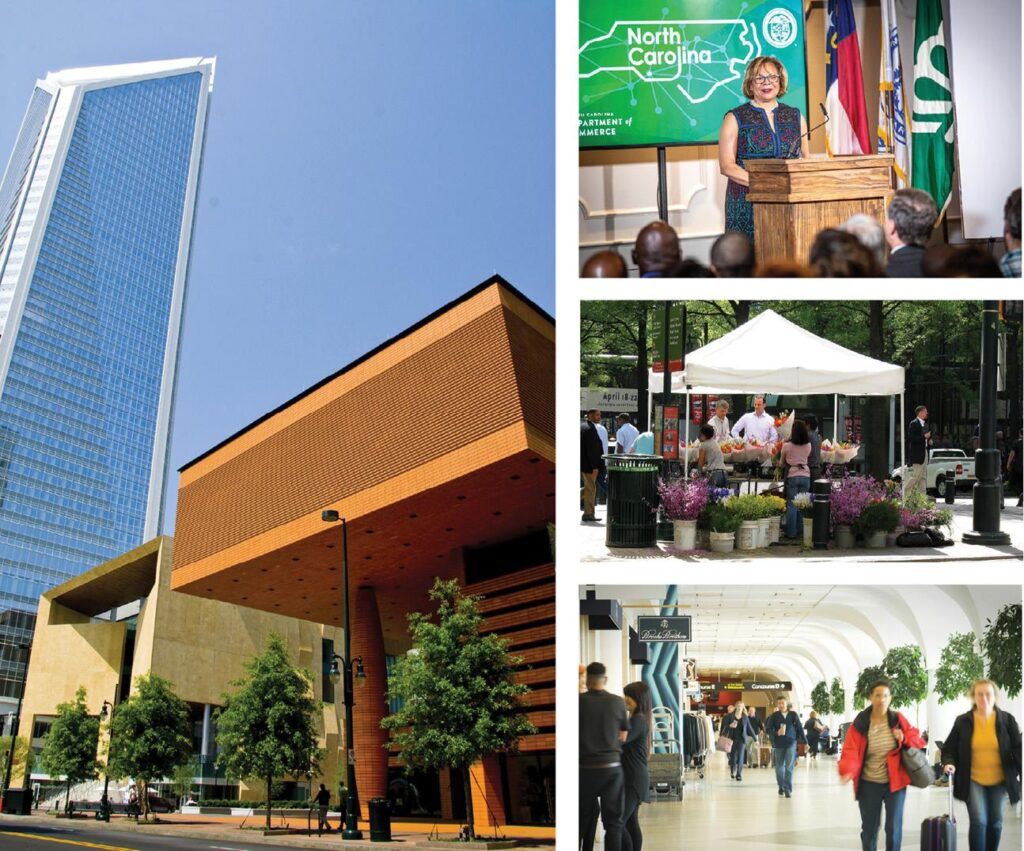Home / 03. Policy Framework / Goal 10: Fiscally Responsible
Plan Policy
Table of contents
Goal 10: Fiscally Responsible

Goal 10: Fiscally Responsible

Charlotte will align capital investments with the adopted growth strategy and ensure the benefits of public and private sector investments benefit all residents equitably and limit the public costs of accommodating growth.

Objectives
- Increase the capture of new jobs and households in Activity Centers.
- Increase infrastructure investments (water/sewer replacement, street lighting, stormwater facilities, streetscaping, etc.) in existing urbanized areas planned for significant new development that are constrained by infrastructure capacity.
- Maintain or decrease the cost to serve residents per capita (e.g. costs to provide transportation, schools, parks, libraries, police, fire, etc.).
- Increase tax revenue generated per acre by new development.
- Increase capture of new development in areas with available service and infrastructure capacity (e.g. water/sewer, stormwater, transit etc.).
Big Policy Ideas
- Leverage private investments and direct at least half of public infrastructure spending over next 20 years to the most vulnerable neighborhoods and businesses, especially those within the Vulnerability to Displacement Overlay.
Policies
- Develop and maintain a process that ties the Community Improvement Program (CIP) and Bond Package projects to framework policies and objectives in the Charlotte Future 2040 Comprehensive Plan. Prioritize projects deemed to better support equitable community goals.
- Empower neighborhoods and businesses districts to aid in the development of Capital Improvement Plan and Bond projects1.
- Continue to evaluate the City’s annexation strategy to ensure alignment with the City’s fiscal objectives and feasibility to provide City services to the area/s for which one or more property owners is requesting annexation.
- Utilize value capture and impact mitigation tools in high growth areas to ensure new development is adequately served.
- Prioritize funding from a variety of mechanisms and tools for reinvestment in non-high growth areas.
- Use fees and funding tools and evaluate other tools, such as Community Benefit Agreements to ensure new development contributes to the funding and construction of new infrastructure and services needed to support new development.
- Encourage new development in areas identified as able to serve new residents and businesses.
- Create a formalized and unified system for developing comprehensive forecasts of new development and notifications of land use changes for all utility and service providers to use to plan for future growth.
- Educate City and County departments about the impact of land use decisions on ongoing operating costs when making investment decisions (e.g., for schools, minimum acreage requirements and locating close to neighborhoods to reduce transportation costs).
- Develop programs to require that all costs of utility extension be fairly allocated to the development, to encourage efficient growth that minimizes utility extension costs (e.g. Charlotte Water).
1https://www.map-strategies.com/blog/2018/12/17/five-density-bonus-programs-in-chicago - Partner with utility and service providers when developing small area plans to better estimate utility needs and guide land-use decision-making.
- Analyze and plan for infrastructure and utility needs in areas identified as play Place Types (e.g., Regional and Community Activity Centers) or where additional infill and redevelopment will be encouraged.
- 10.13Evaluate fiscal impacts of major changes in Future Place Type designations and continue to assess fiscal impacts for all annexations.
- Perform an economic impact analysis prior to the implementation phase of the Plan (see the Implementation Strategy document for more detail).
Recommended Projects and Programs
- Continue to adjust annexation policy to respond to and account for long-term City revenue and service provision impacts.
- Utilize a fiscal analysis tool and the Equitable Growth Framework to help inform decision-making related to large private developments.
- Evaluate development regulations to ensure they encourage infill and redevelopment and adjust regulations to remove barriers or create incentives as needed.
- Develop a revised Capital Improvement Plan (CIP) and bond project selection program that implements the Charlotte Future 2040 Comprehensive Plan. Establish a multi-departmental and agency capital improvements committee to create a framework for tying the comprehensive plan to the CIP process and bond packages. Use this committee approach to evaluate and prioritize CIP projects that: UL::Are developed using cross-departmental partnerships and address policy goals of multiple departments. UL::Address existing access to opportunities identified within the Equitable Growth Framework analysis. UL::Have outside funding through partnerships with public, private, and non-profit entities. UL::Support desired Place Type changes identified in the Future Place Type Map and Community Area Plans.
- Create a multi-departmental committee within the City and County that collectively develops growth forecasts and analyzes impacts of new development projects and Place Type changes.
- Upon adoption of the plan, proactively reach out to and provide capacity to support City and County departments impacted by new development by providing information and planning support to help them incorporate Place Types into their planning process.

Image source: https://www.trulia.com/n/il/chicago/south-chicago/83074/
The City of Chicago created a new program through revisions to its Zoning Code in 2016. The program was created with the purpose of leveraging funds generated by new development in the central part of Chicago and redirecting these funds to support commercial corridors in undeserved neighborhoods. Chicago Neighborhood Opportunity Fund receives funds from Downtown development density bonus and redirects that money to development projects occurring in targeted areas on the west, southwest and south sides of Chicago for new construction or rehabilitation of commercial projects. Development projects in the downtown area can obtain density bonuses in exchange for voluntary payments into the Neighborhood Opportunity Fund. The funds are used to support projects in targeted commercial corridors in the City’s underserved neighborhoods. The program targets investment in commercial businesses with a focus on entrepreneurs of color. The program offers two grant types (small and large) for any projects located in the identify areas that meet the program criteria. The program is an example of communities can leverage investment and density in high growth areas (e.g. Uptown) into benefits to the community elsewhere in the community.
